The workforce consisted of less than 100 men, yet they finished construction in just 94 days. Such speed was possible due to the elimination of scaffolding. Instead, iron rods were used to support construction of the trusses between the towers, and workers moved back and forth across the rods. A dangerous venture, yet no workers were seriously injured.
Civil


When Governor James Grant arrived in the newly acquired British colony of East Florida in 1764, he found it devoid of settlers. To increase both the population and commerce with the 13 colonies to the north, he commanded that a road be built from his provincial capital of St. Augustine to Ft. Barrington, Georgia.

The Charles River Basin was one of the pioneering environmental engineering projects in America. The project transformed 675 acres of unhealthy and unsightly salt marshes and tidal flats were into an environmental centerpiece for the Boston area by 1910. This was one of the first public projects to radically improve the environment and has served as a model for similar projects around the nation.
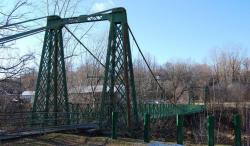
A 214-foot single-span covered wooden bridge, built above the cribs of stone in the AuSable River that served to break log jams and ice floes, collapsed during the winter of 1875 under the weight of a three-foot snowfall and high winds. The "Upper Bridge" (pictured) was built in its place.
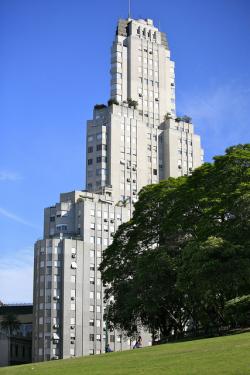
Built during the 1930s, when Argentina's economy was the tenth strongest in the world, the Kavanagh Building was one of the world's first reinforced concrete skyscrapers and for many years remained the tallest building in South America. Commissioned by Corina Kavanagh and designed by architect Sanchez Lago y De la Torre, the 31-story modernist structure juxtaposes five volumes in a triangular, stair-like configuration that served for many years as a representative symbol of modern Buenos Aires.
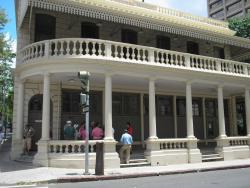
The Kamehameha V Post Office is the oldest surviving public building in the U.S. constructed with reinforced concrete. The success of this early structure helped establish the value of reinforced concrete as a durable construction material.
Brickmaker J.G. Osborne was chosen to provide design and construction. He immigrated to Hawaii from Yorkshire, England, and was aware of the recent development of Portland cement and its expanding use in Europe. It is believed that the leaders of Hawaii were anxious to adopt British skills, which influenced their selection of Osborne.

In 1866, the Covington and Cincinnati Suspension Bridge was the largest suspension bridge in the world. Also called the Ohio Bridge, it was officially renamed the John A. Roebling Bridge in 1983. It was the first permanent bridge over the Ohio River and the only public project in America financed by private investors during the Civil War.
Renowned bridge designer John A. Roebling proposed the structure in 1846; but building the bridge would become a 20-year saga, with heated lobbying both for and against the crossing.
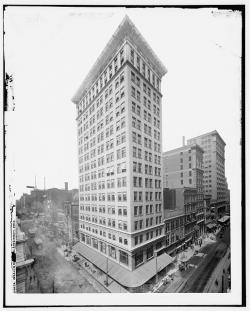
The 16-story Ingalls Building, still in use today, was the world's first reinforced concrete skyscraper. Its success led to the acceptance of high-rise concrete construction in the United States.
Melville E. Ingalls, for whom the building is named, spent two years convincing city officials to issue a building permit. Skepticism was high, because the existing height record for a concrete building was only six stories.
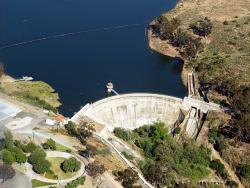
When completed in 1888 to a height of 90 feet, Sweetwater Dam was once the tallest masonry arch dam in the United States, and it led to many others of the same basic design. The original construction began in November 1886 under the direction of Frank E. Brown (civil engineer for Bear Valley Dam) with the rubble-masonry thin-arch design being 50 feet in height. Subsequently, the owner of the water system called upon civil engineer James D. Schuyler to continue and complete the project. Although the field of hydrology was very new and not fully understood at the time, Mr.

Built between 1794 and 1796 by the 22nd King of the Joseon Dynasty, Jeongio, this fortress is an outstanding example of early modern defensive works. Principally designed by Jeong Yak-Yong, it incorporated the most highly developed features of science and engineering from both the east and west.


